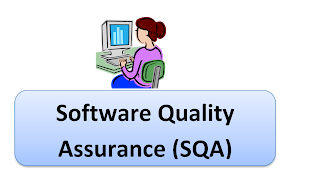Software Quality Assurance in software engineering

Software Quality Assurance (SQA):- SQA is a set of activity assuring quality in software engineering process. Altimetry result in quality in software products. It include a following activities:- Process definition & implementation Auditing Training SQA is a process that insure hat developed software needs & compiles with defined or standardized quality specification. SQA is an on going process with in the SDLC that routinely checks the developed software to insure its needs desired quality measured. SQA helps to insure the development of high quality software. SQA practices are implementation in most type of software development regardless of underline software development model are being used. In a border sense SQA incorporate an implement software testing methodology to test software. SQA process test for quality in each phase of development until the software is completed. SQA genially works on one or more industries standards that helps in building softwar...



